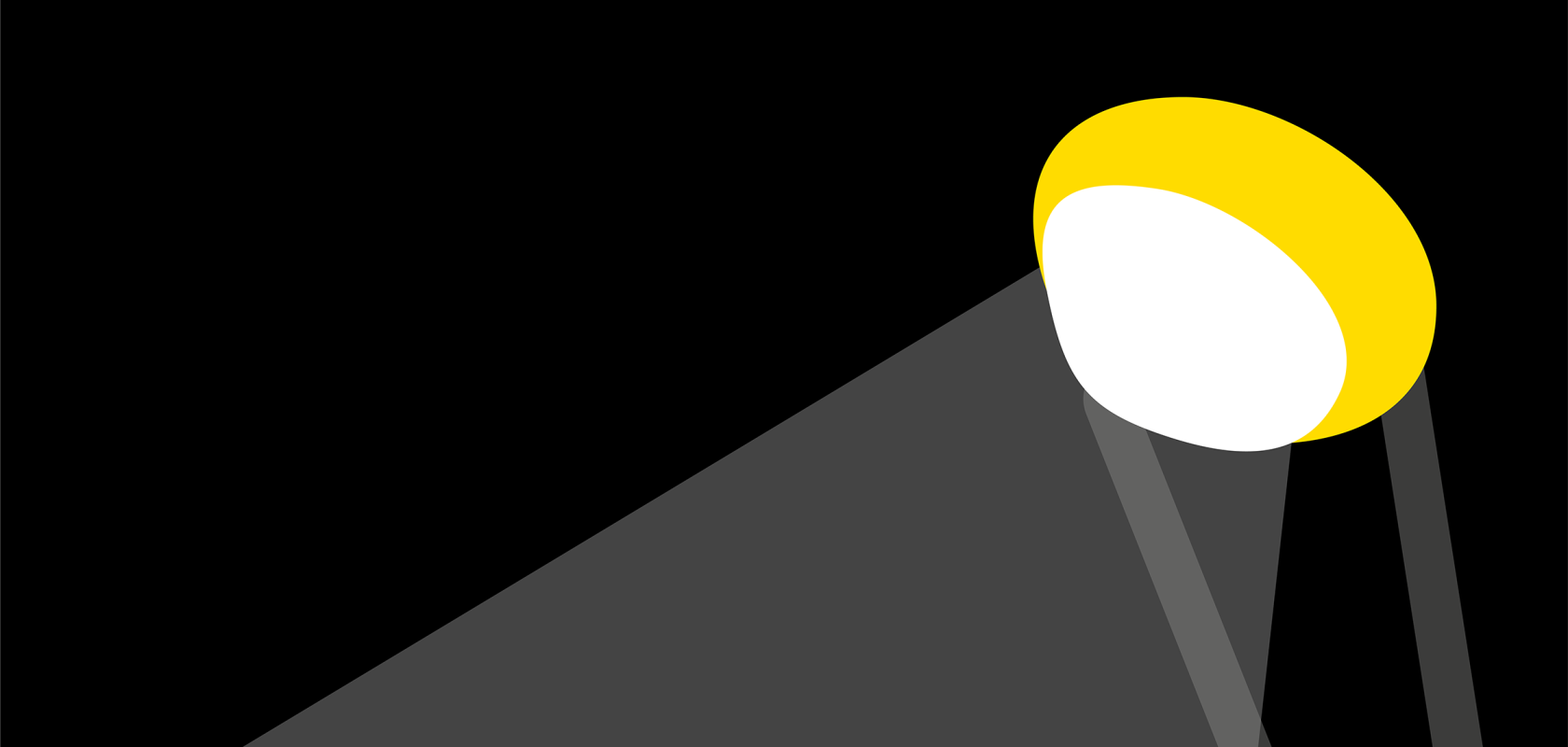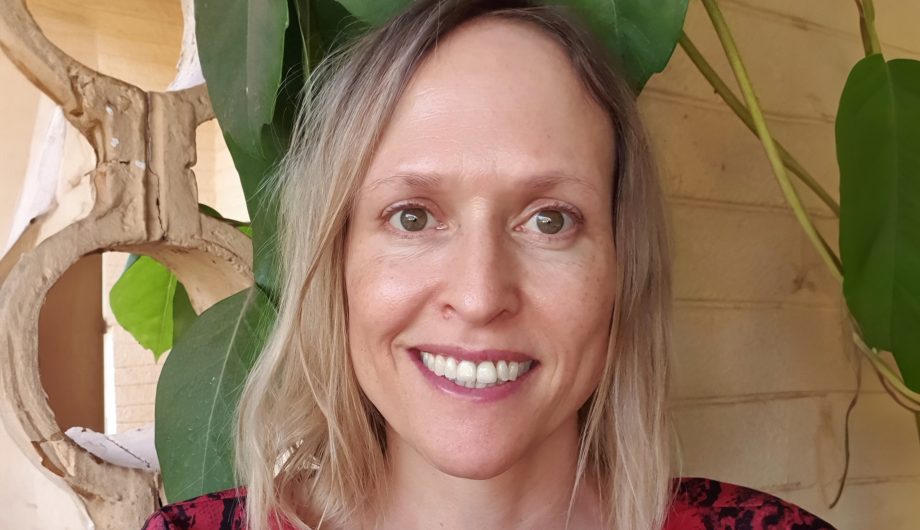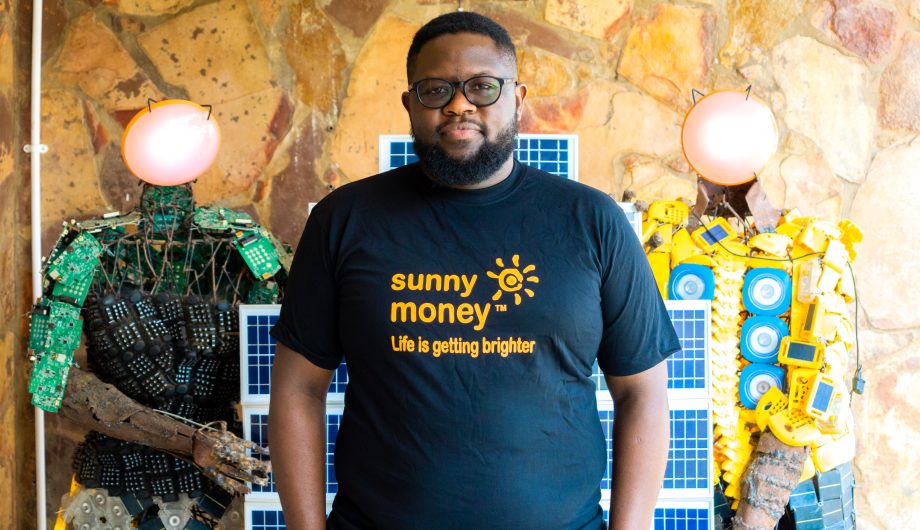Transcript
Fred Mwale: The repair project is so important to the different communities it serves, because we need to understand that the customers who buy the Pico solar lights really sacrifice a lot to buy them. In most cases, customers who spend any kind of money on lighting are using money that they could have used to purchase food or clothing.
Kirsty Adams: Hello and welcome to the Permission to Fail podcast powered by SolarAid. I’m your host, Kirsty Adams, and that was Fred Mwale. Fred’s a project manager on SolarAid’s Solar repair programme in Zambia. As Fred just mentioned, these lights are critical for families, and SolarAid has been distributing these small solar lights for 15 years. That’s more than 2 million units across sub-Saharan Africa. But what happens when the lights go out? Where do broken lights go? Electronic waste is the fastest growing waste stream in the world. A dark, dull pile of these little light gadgets in landfill is not an appealing legacy, is it? This episode is about repair. Equally, it’s about recognizing the domino effect of good intentions. And it’s about making sure those dominoes aren’t adding to electronic waste streams. And it’s about how the communities at SolarAid works with helped shape the repair program. I wondered, do organizations does for example the organization that you work for? Does it recognize the effect that well-meaning interventions can have on rural communities and waste? We’d love to know. So please do follow us and tell us in the comments. Over the next 30 minutes or so, you’re going to learn how SolarAid recognized that it was actually in danger of contributing to Africa’s electronic waste problem. And you’re going to find out what they did to resolve that. Alongside Fred, you’ll hear from Courtney Paisley, who was charged with designing and launching the repair program called Solar Saver Second Generation Lights. Courtney spent two decades working in development across a range of sectors, from agriculture to natural resource management, renewable energy and the circular economy, to name just a few.
Courtney Paisley: My name is Courtney Paisley and I was the project manager for the e-waste project with SolarAid Zambia. A lot of these lights just get dumped basically, they just are left in rural areas. Sometimes they are taken apart for parts. That’s quite common. But the biggest concern are the batteries, which actually go into the ground. And then when it rains and over time, those, those batteries, they leach into the groundwater and affect crops and potentially children are playing with them. So that became a big concern of actually, you could do a lot of good by distributing these lights, by selling these lights. But then actually, who is actually thinking about the end of life of these products? SolarAid has sold over a million lights across Africa in Southern Province of Zambia, where this project was done. It’s over 45,000 lights and we suddenly started to wonder, actually, where are those lights? Are they still working and what’s happened to them? And that’s where this project began. When we first started, we thought, oh, we’re going to do a recycling project. That was actually the initial aim. But then once we started looking into the viability of the recycling industry in Zambia, we had a second think and then started to look a bit more to repair.
Kirsty Adams: So why not recycling?
Courtney Paisley: In order to do recycling and actually make it profitable, you need to have a collection of very large amounts of the different component parts. And while a lot of lights have been sold in the rural areas, not nearly enough in order to make recycling feasible. So we thought, let’s actually get some of these lights, which have failed over the years, because obviously these lights are lasting longer, but they don’t last forever. So let’s start to collect some of these lights and understand what the failures of these lights actually are. So in order to do that, we thought, okay, we need to go to the rural areas and we need to implement a takeback scheme. We decided that we would create a voucher. Now this voucher was providing the person who brought their light back with a certain amount of money off a new purchase of a light. So we got in touch with our communications networks in the rural areas, and we advertised that we were coming, and we were explaining that we were doing a take back and that people would receive vouchers. We rocked up to the rural areas and people were just did not understand what we were doing. They just weren’t familiar with the concept of a voucher. There was a lot of suspicion. What are you doing? What are you actually want? And a lot of people thought, oh, if you are going to give me money off a new light for this broken or non-working light, this thing must be worth something.
Courtney Paisley: And so a lot of people really wanted to know, what are you going to do with this? Are you making money off of it? And why should I give it to you? We realized that there was a lot more groundwork to do in terms of building trust, in terms of explaining what we’re actually doing and how we were going to use these lights. And so the first round did not go so well. At first we trialled a control group for the vouchers. So we had two communities where we went in with vouchers and the third where we provided no vouchers. We quickly changed that when in the control group, we received five lights through all of our visits, and then the other ones we received sort of around 30 to 35 products. So quickly we thought, actually, if we want to get lights, we need to provide some sort of incentive. Next we basically realized, okay, first we need to go actually face to face and explain what the project was about. And only then could we really expect people to actually bring their lights. And what we did find was people were much more willing to give their light under certain conditions.
Courtney Paisley: One was if their light was very, very well used, it was very clear that they couldn’t get anything from it. And then also when we explained about the e-waste and about the problems in rural areas, about having these types of waste and it accumulating over time and the damages that it does. The other thing that also made people a bit more amenable to it was if the repair technician would actually open the light in front of them and show them the damage that had actually been done. I think it’s quite interesting that we we thought we already did have a really good understanding of what the communities want. And in terms of sales, I do think there is a strong understanding. I think no one really realized that repair would be such a different animal. We probably would have saved ourselves some time and energy if we had started discussing the idea a lot earlier before the project sort of launched and before we actually started these take back days. That’s a good lesson for anyone. You know, you as much as you know the communities that you work with because you’ve been working with them for years or decades even. When you change tact and you start a new program that could actually create a whole new array of areas that you’re just not familiar with.
Kirsty Adams: In the society that most of us grew up in is difficult to imagine that vouchers are a tricky concept. Now that you and I know how the project developed, let’s hear from Fred again to hear about the day to day operations.
Fred Mwale: I think I like to describe them as organized chaos. When you walk in a repair shop in these communities, you find everything’s just everywhere. There’s TVs, there’s radios, there’s refrigerators, there’s circuit boards all covered in dust. But the repair technicians seem to know where every single thing is. We’re trying to show manufacturers that repair is an option. Customers do need spare parts. They do need knowledge as well. And the other thing is we do have a Sunday money repair app. We want to explore further, expand it as well, see what more we can do with the app because we are working in third party repair technicians now. We want to be able to see how viable the business model is for the repair shops. We really want to make sure they are earning good revenue and turning good profit, because that is one way we see this being sustainable, especially for the repair shops. I think the main thing that surprised me was just how quickly customers heard our call and continued coming up in numbers up until the last repair days. I should mention that repair days are pretty much community days, where we ask customers to come to a central location, which would be a school, and would have our repair technicians there, and customers would have their lights repaired from there. And it was just really fascinating how we didn’t have to struggle much to convince the customers to come through, because of course, we did know prior to the start of the project that there was a genuine interest and the need to have faulty lights repaired, but we were so overwhelmed by how many customers showed up each and every time, ready to bring their lights, ready to pay for for their lights to be repaired as well. And I think it just goes to show how much the customers trust the SunnyMoney brand, trust what we can do for them and trust us in all things. That really did surprise me.
Kirsty Adams: I am a big fan of organized chaos. I must say. If you’re sat back right now thinking about the organization that you are part of and wondering what your waste legacy might look like in 15 years time, then keep listening because Courtney has some advice for you.
Courtney Paisley: I think it would be wonderful if you could get all the different partners on board. So the manufacturers and the sort of social enterprises which are going out there, I think working together would be a lot more helpful than trying to get one partner to do it themselves. And I think that requires a lot more concerted effort and probably some advocacy sort of on a on a bigger scale and perhaps, you know, naming and shaming or getting manufacturers to actually care and to see this as part and parcel of, of their responsibility as, as manufacturers and distributors.
Kirsty Adams: Remember earlier when Courtney said that people were quite wary about giving their old lamps back? Well, that’s down to just how valuable they are to the people that use them.
Courtney Paisley: We were doing the take back. Most people asked, actually, can you repair this? We weren’t actually expecting that question, but almost every single person asked, well, can’t you repair this for me? And when we said, okay, maybe we can try, we can, we can see how we’re going, because this was early stages of the project and we weren’t sure if we would be able to repair. And so people started writing their names and their phone numbers on their lights, because not only did they want repair, they wanted their light repaired. So they had a bit of a connection to their own light and potentially a bit of suspicion that someone else’s light might not be as good condition as their own, but that sort of attachment to their own light was something that we weren’t expecting as well. So when people had these markers and they were writing their names and their phone numbers, it was very difficult to give them someone else’s light. It did create a bit more work for the repair team, but I think that was it was quite nice and people were really, really grateful when they did get their own light back and they weren’t expecting it.
Kirsty Adams: Actually, it’s amazing to me to think how much of a deal breaker not receiving your lamp back was. After all, it’s something that we here in the UK would take for granted. So what does the future of the project look like? Here’s Courtney again.
Courtney Paisley: I think repair is always going to be challenging because it doesn’t make money. Any of the companies or the manufacturers are not going to be that interested in providing repair services, maybe as part of their corporate social responsibility. But as we know, and this again, is not unique to Africa or Zambia, they make more money off new purchases than they will on repairing existing purchases. So it’s really at the moment it’s the NGO sector which is driving the repair, the sort of right to repair movement which we know is gaining steam in Europe but is still quite nascent in a lot of other countries. And so I think we’re still quite a ways away from making good quality repair, let’s say, accessible to everyday Zambians. I really hope that by that time there are local repair agents across the country that people can go to and they get their lights repaired and get everything repaired, to be honest, but get repaired with good quality products, not batteries, which are going to die in two days and then sit in rural areas and leach into the ground. I really hope that we there will be enough of a demand, or at least even if people are forced to through policy, that there will be that access to repair across the country.
Kirsty Adams: Courtney makes some really important points there about the role the manufacturers play in creating a more circular economy. Having recognized this, SolarAid now sees that there’s potential to collaborate to influence those manufacturers and the wider repair agenda.
Fred Mwale: Now that the project is done in Zambia, and off that project, we developed and launched a white paper with the help of the University of New South Wales in Australia, and we presented our findings on a webinar that we held shortly after the International E-waste Day. And it’s been overwhelming the amount of response that we’ve gotten from the webinar. A lot of people wanting to come in and work with us and see just how much we can go on with this repair agenda, and what’s really key right now is we see a lot of actors around the world, not just in Zambia, looking to further the repair agenda in the off grid sector. One of them is coming up with some standards for manufacturers models and testing on how to repair different solar lights. Inclusion of productive use of equipment. And this is just a testament to show just how much potential there is for repair. And we do hope that in our next phase, which we are now planning, where we’ll be looking at different models and testing how profitable some of the models can be, just how far we can influence manufacturers to manufacture lights that are more repairable, or hopefully we can help influence standards across the sector. Hopefully we can also work on just the general sense of what repair offers because like has been said already, there are a lot of lights out there that are just hibernating and have some life in them as soon as they repaired. So we hope that you will continue being with us on this journey, even as we continue our trial and error methods, we still will continue to learn and we’re so hopeful for the future.
Kirsty Adams: There’s so much hope and ambition in Fred’s final message there, and the fact that SolarAid, after their pilot, after much trial and error is in this position, just shows how successful the repair program has been. What I have loved learning throughout this series, which has frankly proven to me that the value in having permission to fail is how SolarAid and its partners have the freedom to explore until the success lands. I see a lot of success in the repair shops that we talked about today, and above all, I’d say guidance from the communities has shaped it. Before I go, I just want to remind you to take a look at Solar Aid’s shop. Every purchase from its store supports SolarAid’s work. Go and buy a virtual gift, an e-card, some merchandise. Just visit shop.solar-aid.org. And right now, if you become a new SolarAid regular giver, all monthly gifts will be matched for the first six months by a generous SolarAid supporter, meaning double the impact of your donation. That’s right, double go to solar-aid.org/donate. Okay, see you next time for the final part of the Permission to Fail podcast.
Kirsty Adams: If you want to learn more about solar aid, please visit www.solar-aid.org. You’ll find the link in the show notes. Goodbye for now.


